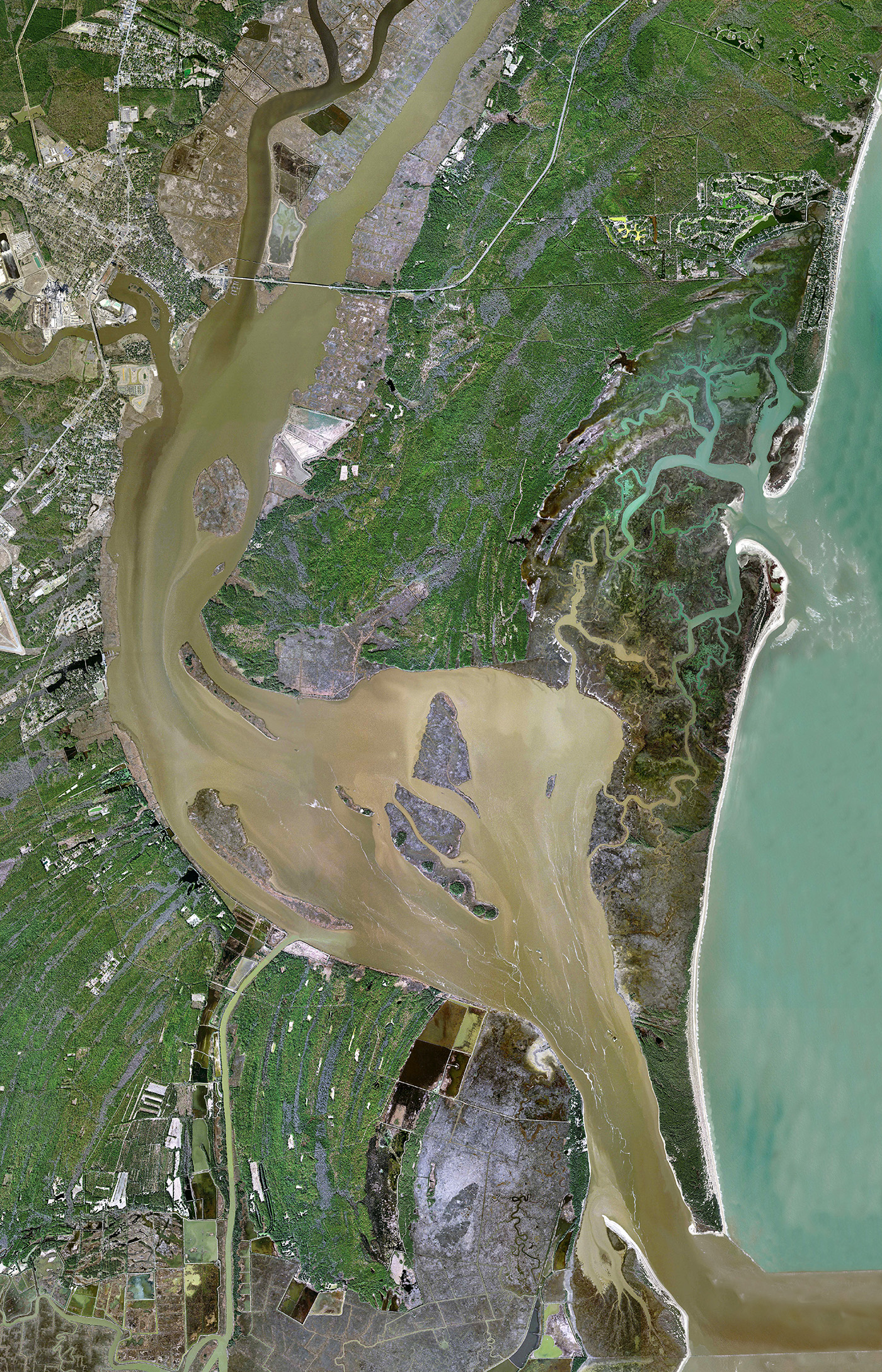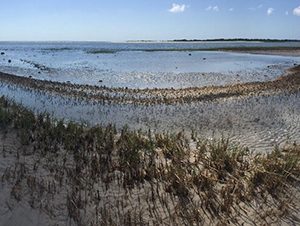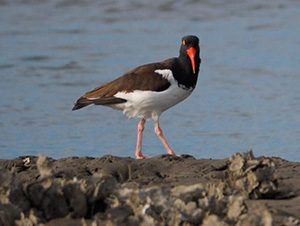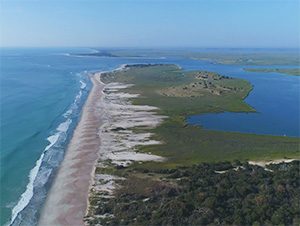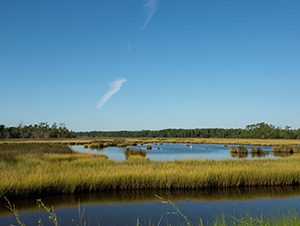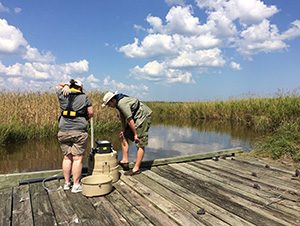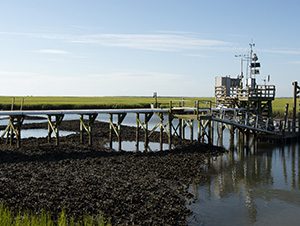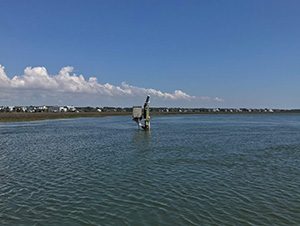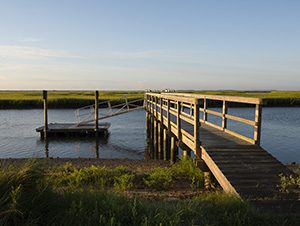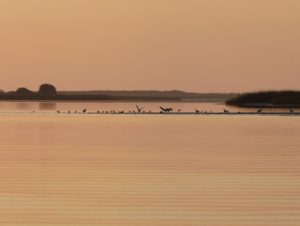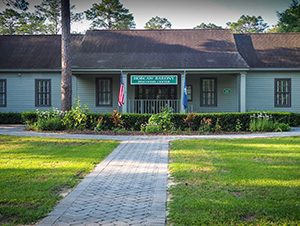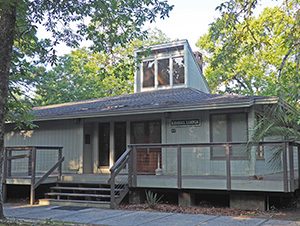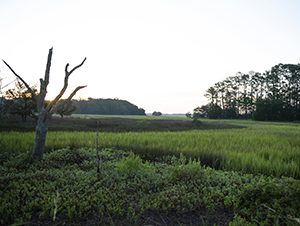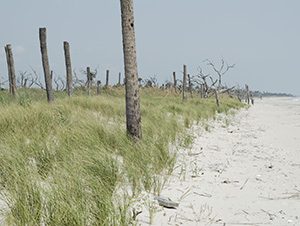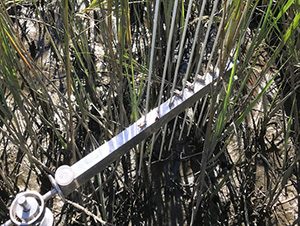Goat Island Causeway
The drive out to Clambank Landing along the Goat Island Causeway is an opportunity for scenic marsh view, wildlife sightings, and also to observe evidence of a changing landscape.
The marshes and pools along the causeway provide feeding and resting habitat for many species of shore and wading birds, but are becoming increasingly frequented by two non-historically present species- roseate spoonbills and woodstorks. Due in part to water management practices in southern Florida and degradation of the Everglades, the population of wood storks has declined significantly since the 1960s. However, population declines of the wood stork in south Florida may be balanced to some extent by increased movement into central and northern Florida, Georgia, and South Carolina. Roseate spoonbills have also been moving north and inland, abandoning their historic breeding grounds in Florida Bay and the coastal Everglades. These two species appear to be adapting to changes in climate and land use by finding new areas to breed and new sources of food, but the long term outlook for these species is not certain. Their population numbers are still relatively small, and they will have to continue to compete with coastal development and sea level rise for space to feed and raise their young.
Video
Gallery
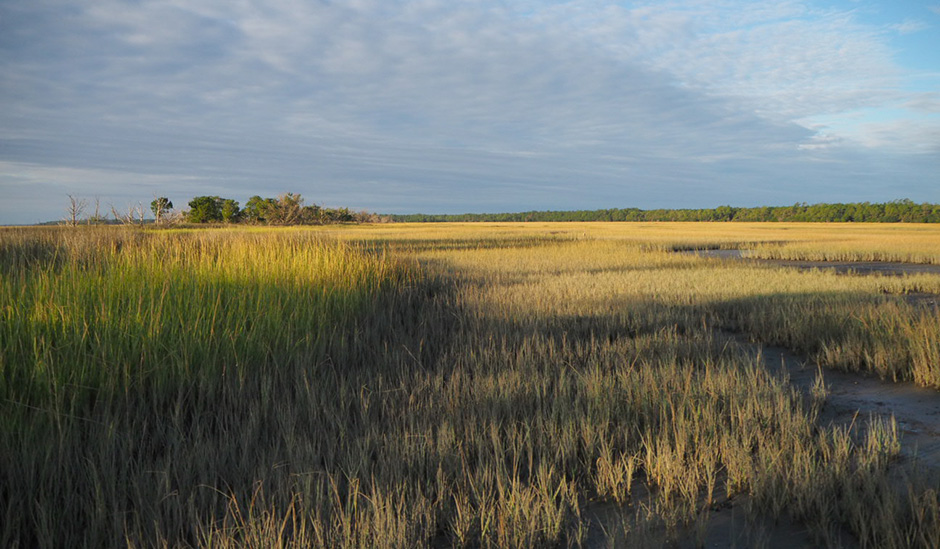
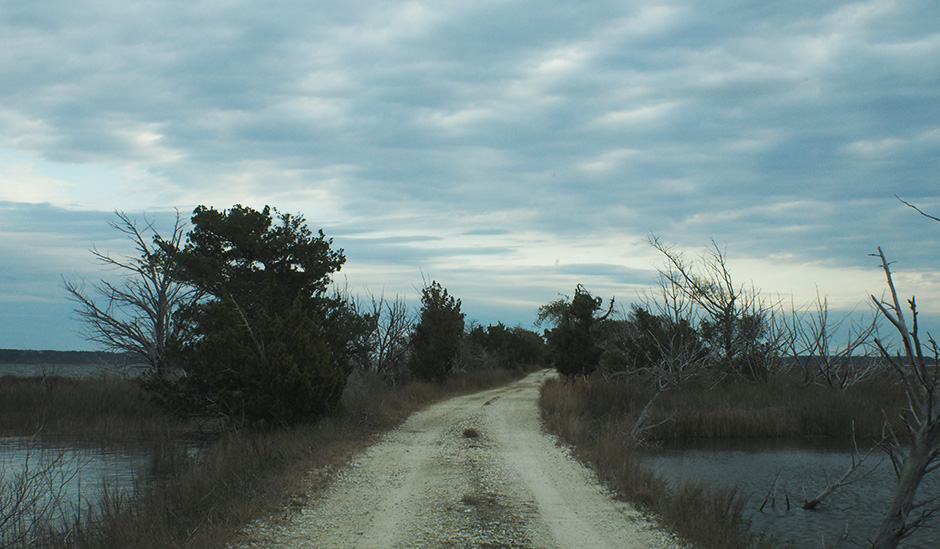
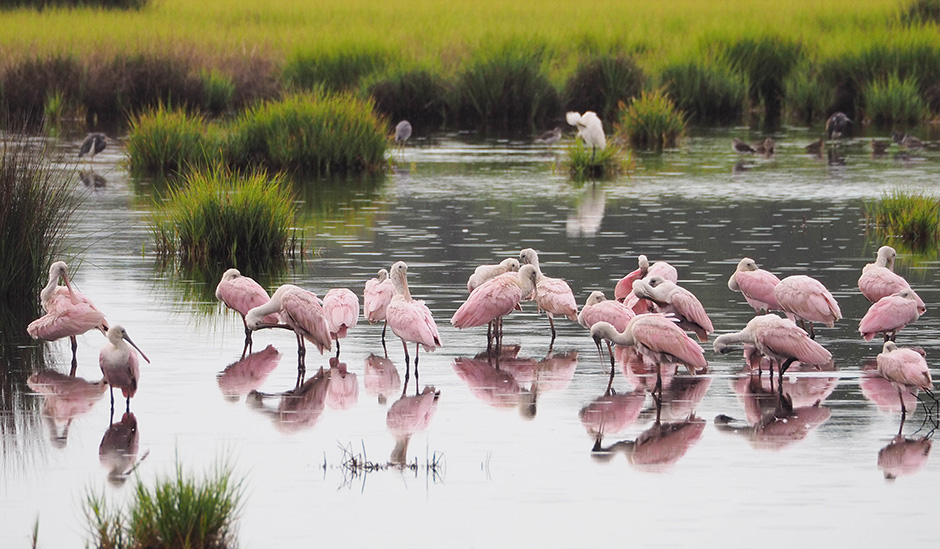
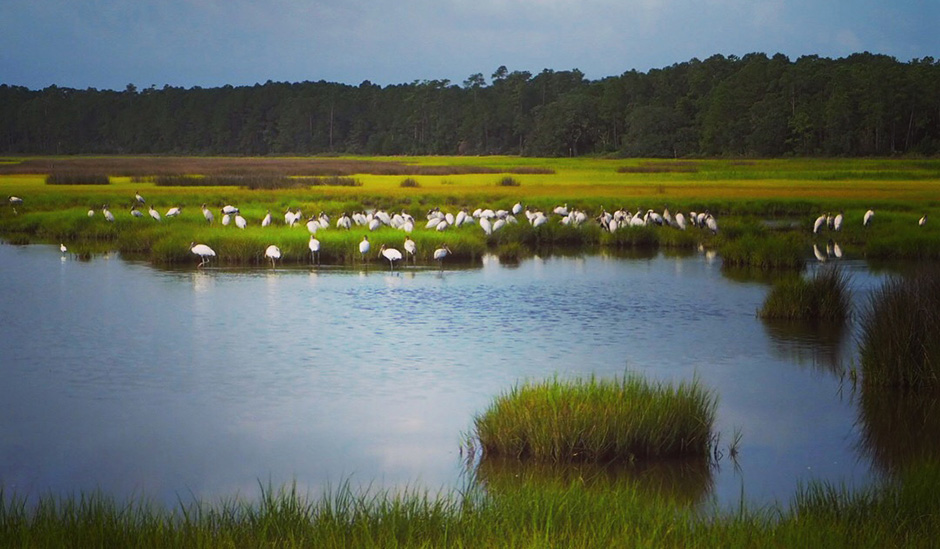
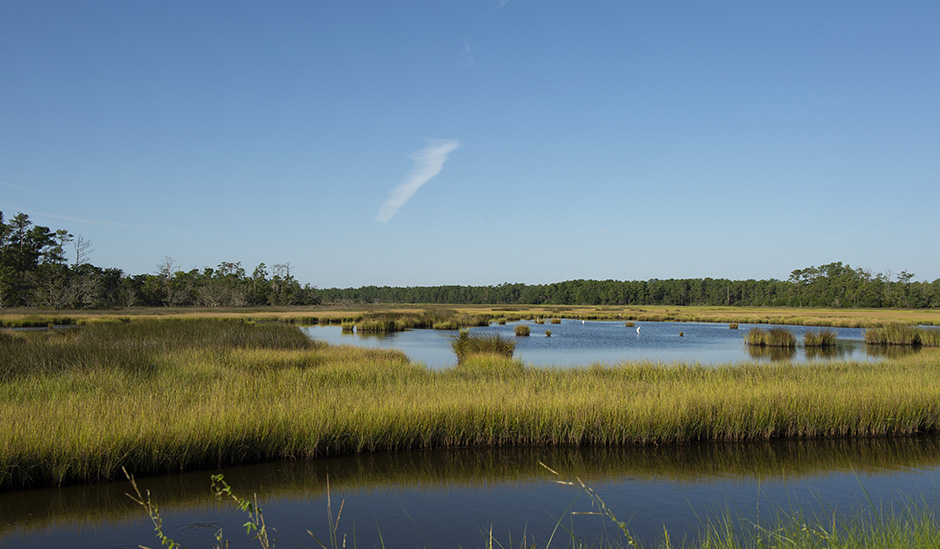
Tour the Reserve
